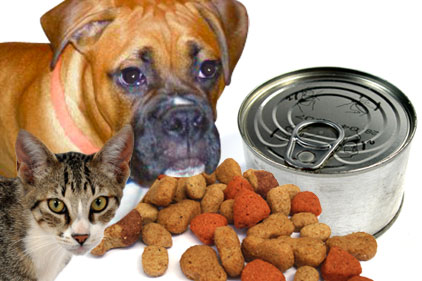PMMI’s (www.pmmi.org) “Pet Food Market Assessment 2013” describes a competitive market, where brands are striving to set themselves apart. Not surprisingly, they’re turning to packaging to set their products apart and responding to consumer needs.
By and large, however, pet food is generally in traditional formats — 60% in multi-walled bags, for example. The report describes three package design considerations that are receiving the bulk of manufacturers’ attention: shape, closures and convenience.
“For the most part, pet food follows similar trends and styles in packaging as human foods,” says Jorge Izquierdo, vice president, Market Development, PMMI. “Pouches are most popular for treats, but are also gaining prominence for moist shelf stable foods. And plastics and laminates usage is expand at a double-digit pace.”
Not only are the trends reflecting a need on manufacturers’ part to differentiate products, but they’re prompting increased collaboration between manufacturers and their suppliers.
Off-the-Shelf Concerns
Safety, standardization, scarcity of resources and sustainability are main areas of concern for pet food manufacturers, who must adapt to the U.S. Food & Drug Administration’s (FDA) Food Safety Modernization Act (FSMA) requirements and new ingredient definition rules from the Association of American Feed Control Officials (AAFCO). AAFCO members come from every state and are the regulatory officials who have the authority for ensuring the safety of feed.
The manufacturers are also exploring ways to standardize the raw materials they use, ideally through pre-processing inspections; sustainability requirements; and scarcity of resources.
“Pet food manufacturers are competing for human-grade raw materials as they also compete for package materials,” Izquierdo says. “At the same time, their customers, particularly the larger retailers, are actively trying to reduce costs and eliminate packaging waste. Decreasing paper consumption and ‘light-sizing’ packaging came up more than once.”
Case (or Bag) Closed
While unusual shapes make a package stand out on the shelf, they can also pose difficulty in filling and labeling. Here’s another area for teamwork, the report notes, as manufacturers look to their suppliers for filling and sealing solutions that can work with different package configurations.
“The shape of a package changes how it’s held in place, filled and labeled, “ Izquierdo says. “Collaboration between suppliers and manufactures is key to getting the equipment configurations just right.”
Convenience features are also gaining importance, particularly as manufacturers address needs of female and elderly customers. Among the solutions are handles on packages (and, as a result more rigid PET containers); modification of cap closures to make them easier to open; and dispensers incorporated into pet food packages. Resealable closures are an especially high priority.
“As with human food, the closure is critical to maintaining product quality, and considering that most pet food comes in multi-use packages, keeping food fresh and contaminant-free is an especially high priority,” Izquierdo says.
Zipper closures, tapes, drawstrings and Velcro® were among manufacturers’ top choices.
When you put all this together, Izquierdo notes, there’s a wealth of opportunity for all parties. “By collaborating, pet food manufacturers and equipment manufacturers will come up with innovations for retooling existing equipment, adding machinery to the line and better serving customers. Equipment companies will serve their customers better, and so will pet food companies. Everyone wins.”
PMMI’s Pet Food Market Assessment 2013 is available at PMMI.org for $3,500.

